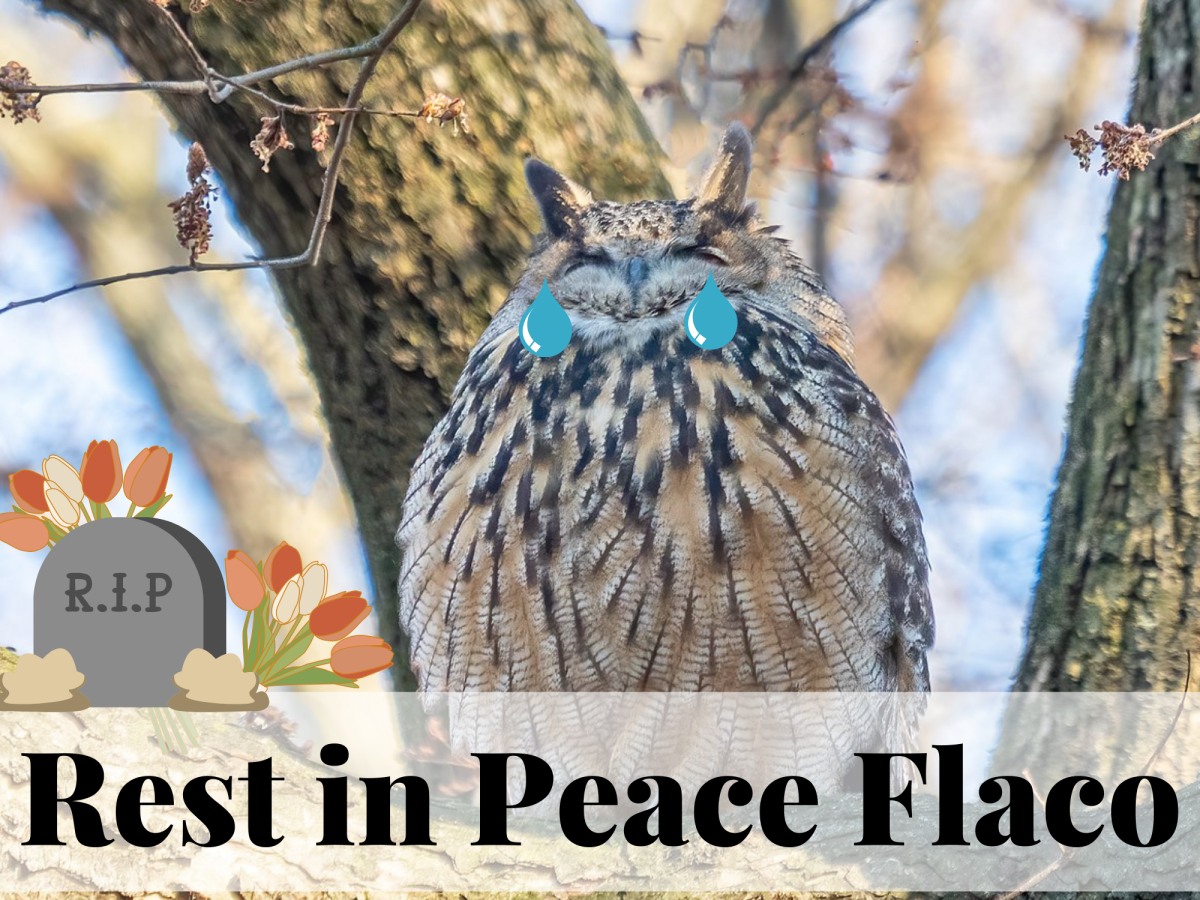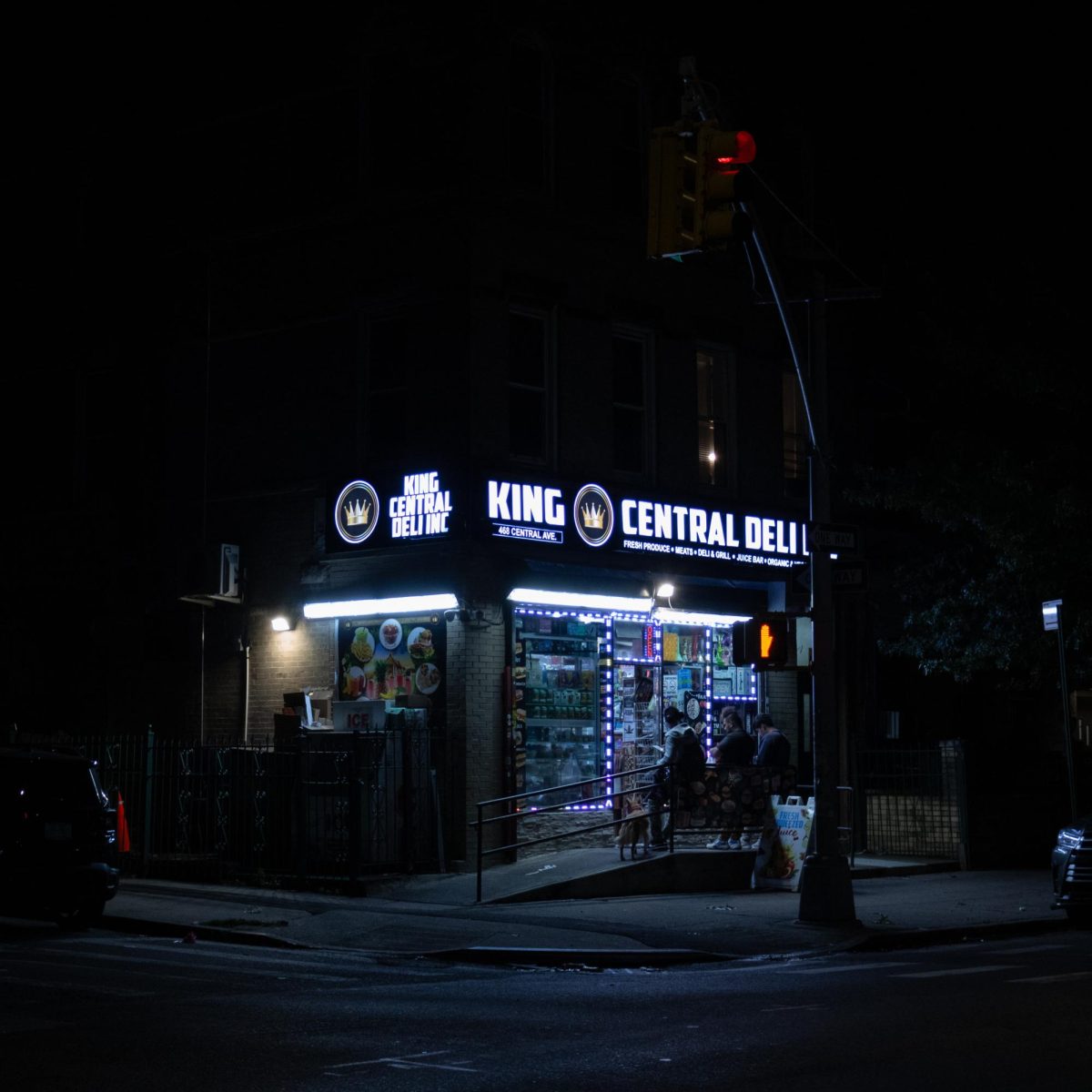Flaco, the beloved Eurasian eagle-owl, died on Feb. 23 after sustaining a traumatic injury from striking into a building on West 89th Street, according to the Wildlife Conservation Society. He was living as a free bird in the city for more than a year. The owl escaped from his enclosure at the Central Park Zoo which was torn open in an unsolved act of vandalism early last year.
“The vandal who damaged Flaco’s exhibit jeopardized the safety of the bird and is ultimately responsible for his death. We are still hopeful that the NYPD, which is investigating the vandalism, will ultimately make an arrest,” the Wildlife Conservation Society said in its statement.
After his escape, New Yorkers kept up with sightings of Flaco, quickly elevating him to the status of a neighborhood legend. The weekend after his death, large crowds gathered at one of Flaco’s favorite trees to pay their respects by bringing bouquets, poems, toys and more.
Many New Yorkers felt a closeness to Flaco, relating intimately with his struggle and resilience. Calicho Arevalo, the artist behind the mural honoring Flaco, found parallels between the orange- eyed-owl and himself.
“For me, it’s more the story of an immigrant or someone not from the city, and then flies free and finds his instincts to trust himself and survive,” Arevalo said.
Mayor Eric Adams weighed in on the situation, saying that Flaco “reminded us of the beautiful wilderness that exists in our bustling urban landscape.”However, these urban landscapes prove to be very dangerous for winged animals. Eurasian eagle-owls have a typical lifespan of 20 years in the wild and up to 60 years in captivity.
Flaco died at the mere age of 13. His cause of death is the same as the nearly one billion birds across the United States that die each year from crashing into buildings.
New York City is a particular hotspot for such incidents. According to the National Audubon Society, as many as 230,000 birds die from hitting buildings in NYC each year.
In urban environments, birds are in constant danger during both the day and night. During the day, windows reflect the open sky and vegetation from below causing birds, who can’t see glass, to fly straight into buildings.
At night, the same windows reflect the artificial lights around the city leading birds to their de- mise.
Contrary to popular belief, these deaths aren’t caused by skyscrapers, but shorter buildings. The first 75 feet of a building is where birds more commonly collide with windows as they reflect
the foliage giving birds the impression of an open sky or treetop. Researchers have found that colliding with buildings is one of the leading causes of death among birds and it is one of the easiest problems to solve.
NYC has already taken measures to help protect the birds and make the city safer for them. In 2019, the city passed the country’s most comprehensive legislation addressing the issue.
The bill requires builders to now use bird-friendly materials in all new construction projects and any large-scale renovations. Additionally, all city-owned and city buildings are required to have their nonessential outdoor lights turned off at night during the peak migration months of April to May and August to November.
Some building owners are also joining the initiative by applying a special film or translucent dots to windows to make them more visible to birds. The effort to protect the birds of the city comes from people both big and small.
Last week, in an act of honoring the fallen owl, the Bird Safe Buildings Act was renamed to the FLACO Act, “Feathered Lives Also Count.”









